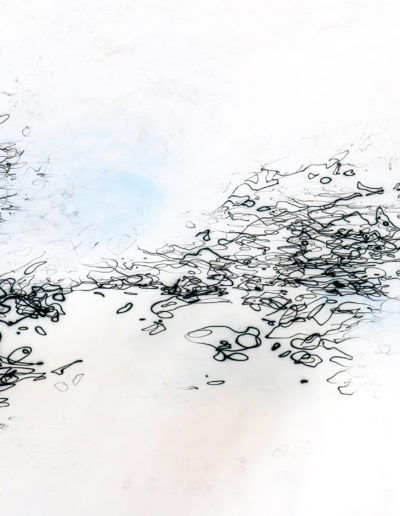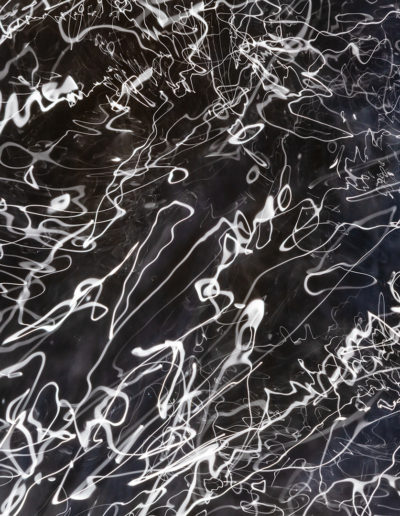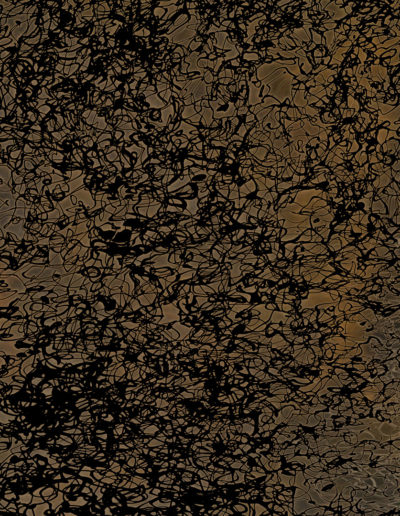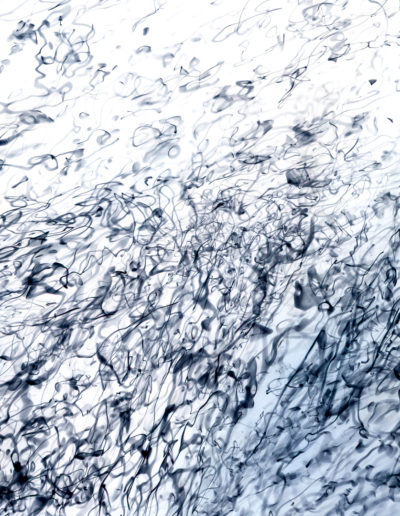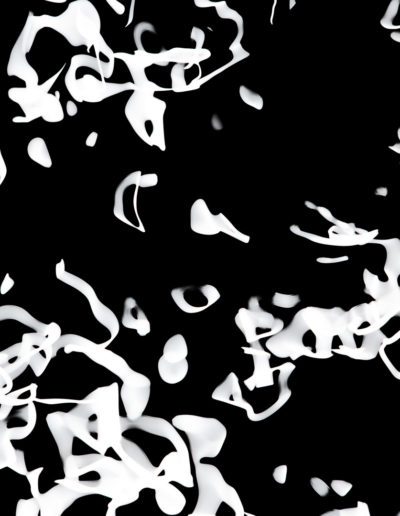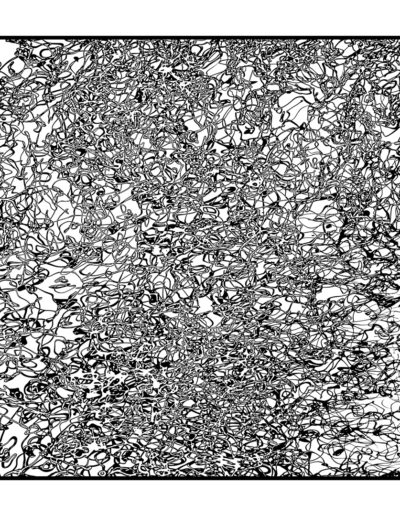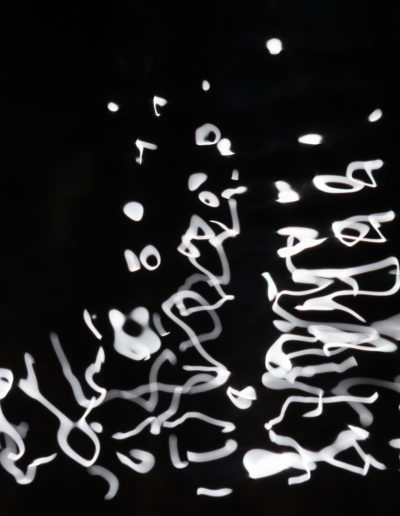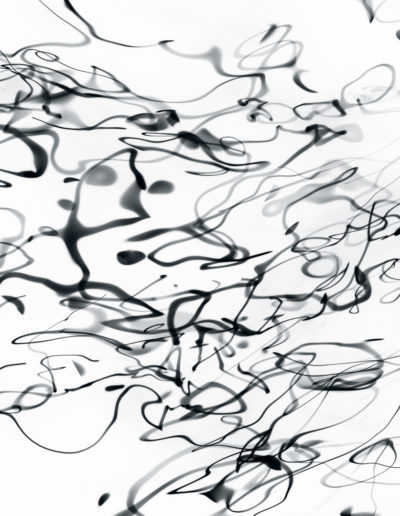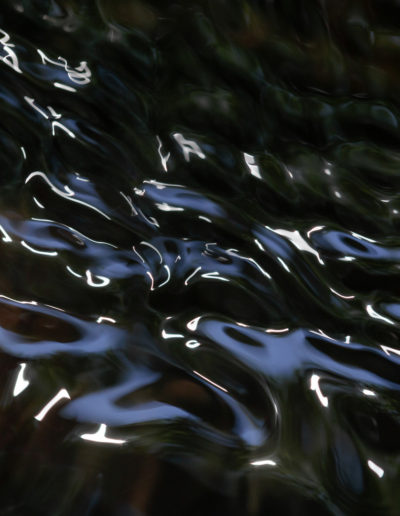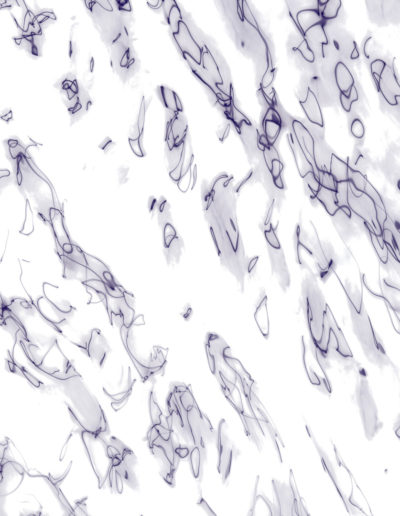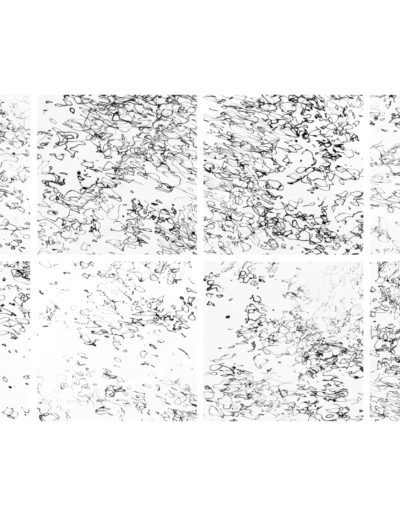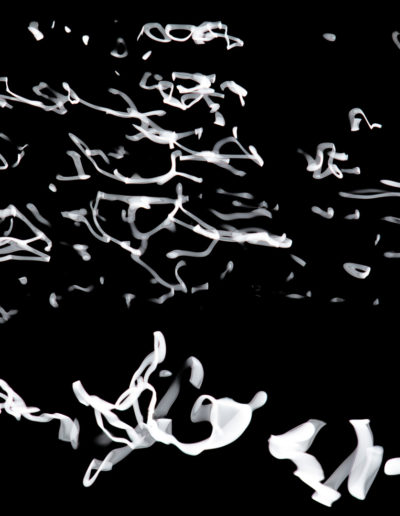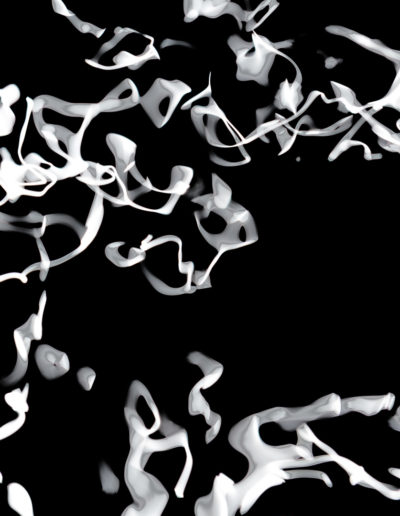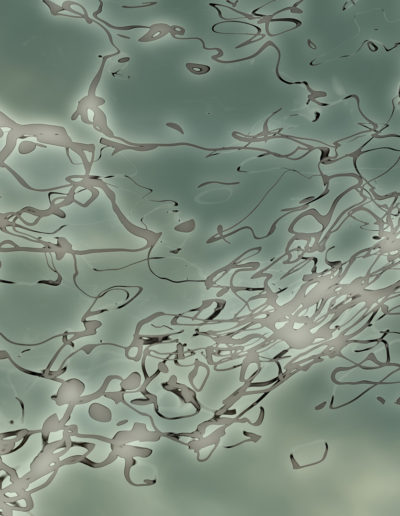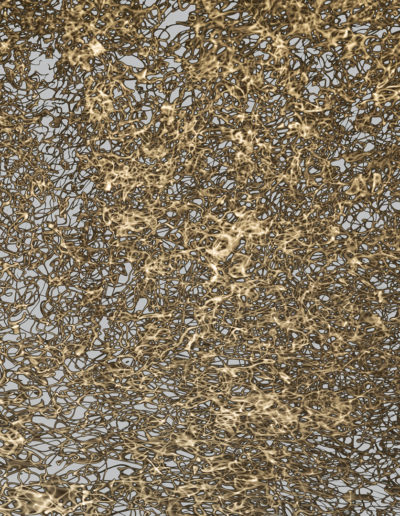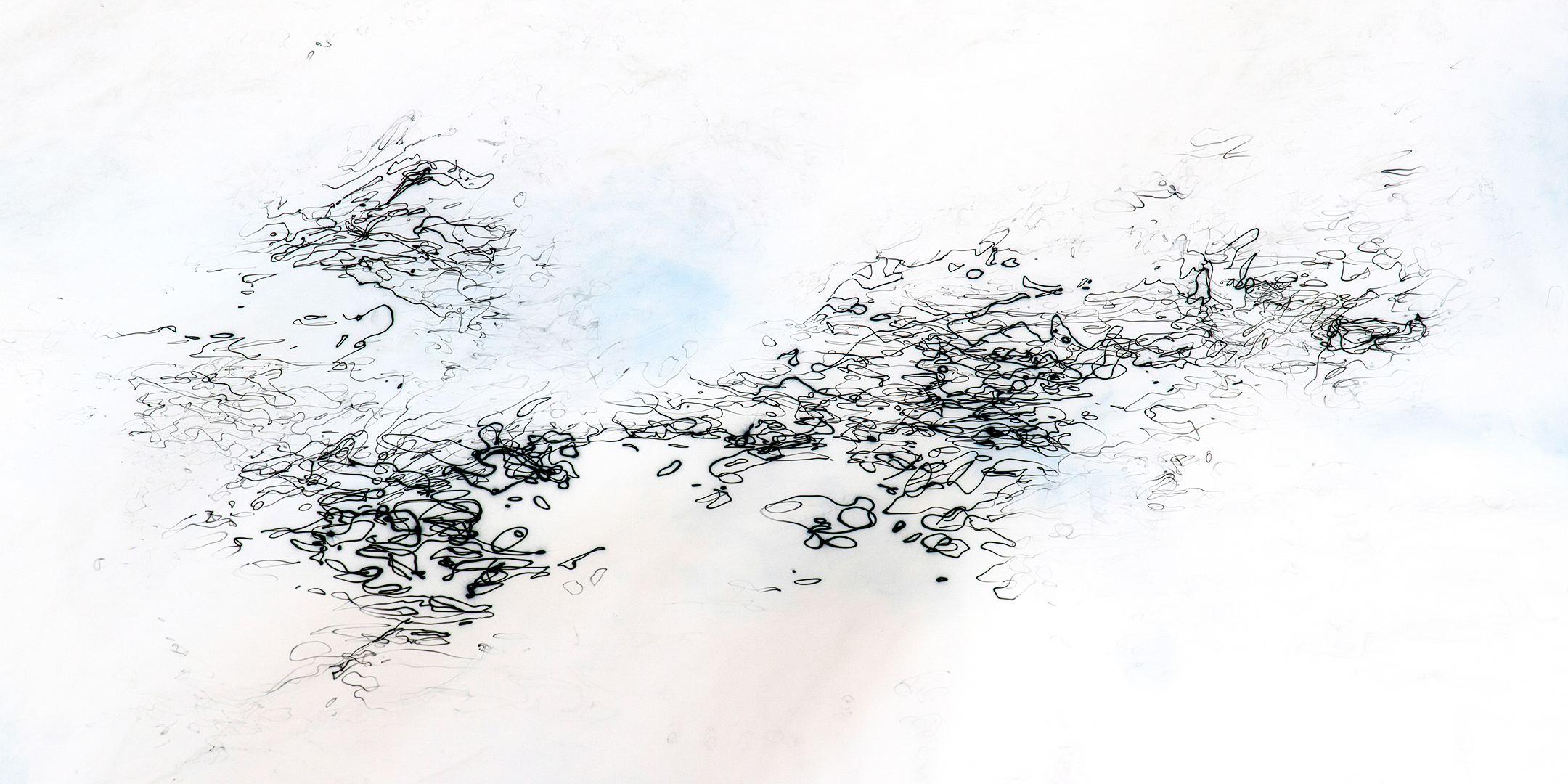
I return frequently to the same small stretch of the River Dove, a two mile walk from my home in the Peak District National Park, shunning the hills and views that draw others and spending my time haunting unremarkable corners. For the past eight years, water has been my canvas. From the outset I’ve been fascinated by the way that the sensor records reflected sunlight as streaks and splashes of white, which at times exhibit a complexity that reminds me of Jackson Pollock’s pourings of paint. For this series, I’ve chosen to examine in detail this natural mark-making. The camera extends and develops my own vision, revealing new truths.
The human relationship with water is complex: it is the essence of life, yet we pay it little attention unless we are the subject of flood or drought. Each river and stream is a complex repository of memories that we may add to our own associations: hydrological flow remembers features, edges and resistance; surface caustics remember light and record surface perturbation.
Our own memories are less reliable than we care to think. Each time we recall something, we rewrite the memory in our brain. A littoral drift takes place amid neurons. Likewise each image differs. This divergence in the field, coupled with our own unreliable recall, prompts me to look at the ways in which these unique moments in time can be interpreted and the variety of ways in which they may be represented.
Successive abstractions remove the stream from the land that bounds it. The water from its context, withdrawing the subject along with the sense of scale that we rely upon. The colour from the image; the light from the water. The conversion of the positive image to a negative one.
Photography as a creative process is one of exclusion, and here I ask “What else can I take away?” What is disclosed and what is withheld lies within the artist’s domain. Existence is emphasised through successive absence:
absence of land = water
absence of water = light
absence of light = dark
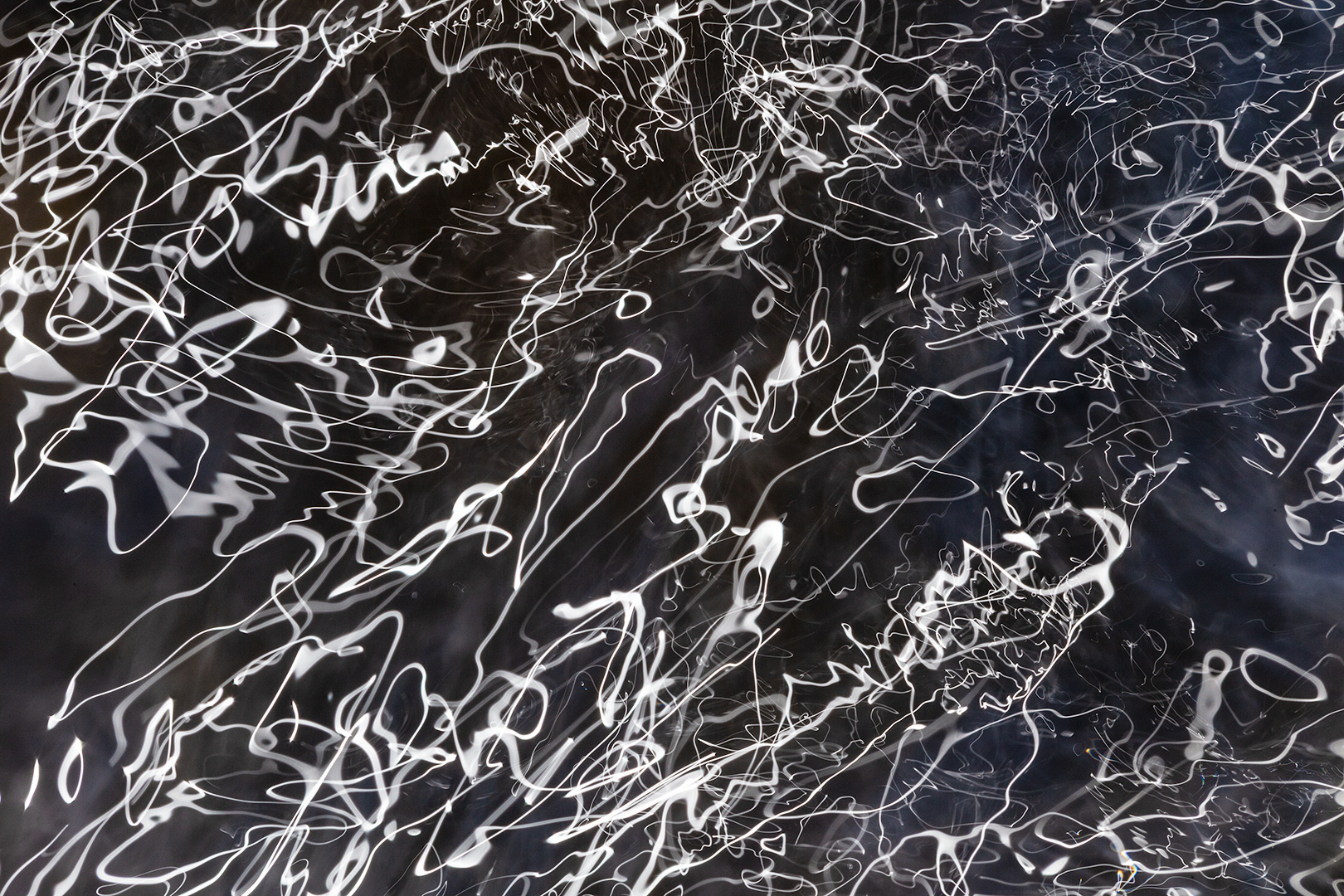
At times existence and absence may be reversed, testing our perception of subject, signal and noise, figure and ground. The contrasts in and reversal of the images prompts me to re-assess the respective role of light and shade, and the darkness reminds me of the shadow that we all cast over our environment. What if the shadow is the substance? When this has gone all that remains is the light, tracing the ways taken by the water. A memory. A memory of water.
In some parts of the world, water is becoming but a memory.
An initial period of interpretation and sequencing led me to make a one-off artist’s book, exploring the properties that different papers imparted to the images, and which can be seen here https://vimeo.com/345699654. Experimentation has transformed my vision and my photographic practice, and I’m currently trying to extend this ‘play’ to the production of prints.
ABOUT MICHELA GRIFFITH
“Photographing water has changed the way that I view my camera – rather than being a box that records the landscape, it is a tool that lends itself to creative interpretations – only our imagination and our tendency to adhere to precedent limit us. I’ve moved away from what many people expect photographs to be. Rather than being a straight record, my images deconstruct the literal and reimagine the subjective, reflecting the curiosity that water has inspired in my practice. The river has been my conduit: it has sharpened my vision, given me permission to experiment and continues to introduce me to new ways of seeing.”
The landscape has always been central to Michela’s life. Working as a Chartered Landscape Architect for 24 years, Michela maintained the interest in photography that began in her teens and this increasingly became a creative outlet for her after moving to the Peak District National Park in 2007. Her photographic practice changed dramatically in 2012 when her local river, the Dove, became her muse, and writing about this led to her involvement with On Landscape magazine.
Since 2014 Michela’s abstract interpretations of water have led to a number of solo exhibitions: ‘Moments of Confluence’, The Joe Cornish Galleries, Northallerton (2015); ‘Liquid Light’, Buxton Museum and Art Gallery, Buxton (2015) and The Peak Photographic Gallery, Bakewell (2016); ‘Within Elements’, Foxlowe Arts Centre, Leek (2016); and ‘Of Wood and Water’, also at The Joe Cornish Galleries (2018). Her work has been exhibited widely, including as part of Lichfield Festival Visual Arts Exhibition; The Chatsworth Festival Art Out Loud; Derbyshire Open Arts; and in group shows at Brighton Photo Fringe in 2017 and 2018 (‘Over the Hill’, ‘Over Hills and Seas’).
Michela is represented by the Longitude Gallery, Clitheroe, Lancashire, and Cromford Studio and Gallery, Derbyshire. Limited Edition photographic prints and open edition prints / cards are available from these and directly from Michela.
Website: michelagriffith.com
Twitter: @michelagriffith
Instagram: @michelagriffith
Facebook: @michelagriffithphotography
CREDITS
Unless otherwise stated, all words and images in this article are © Michela Griffith

